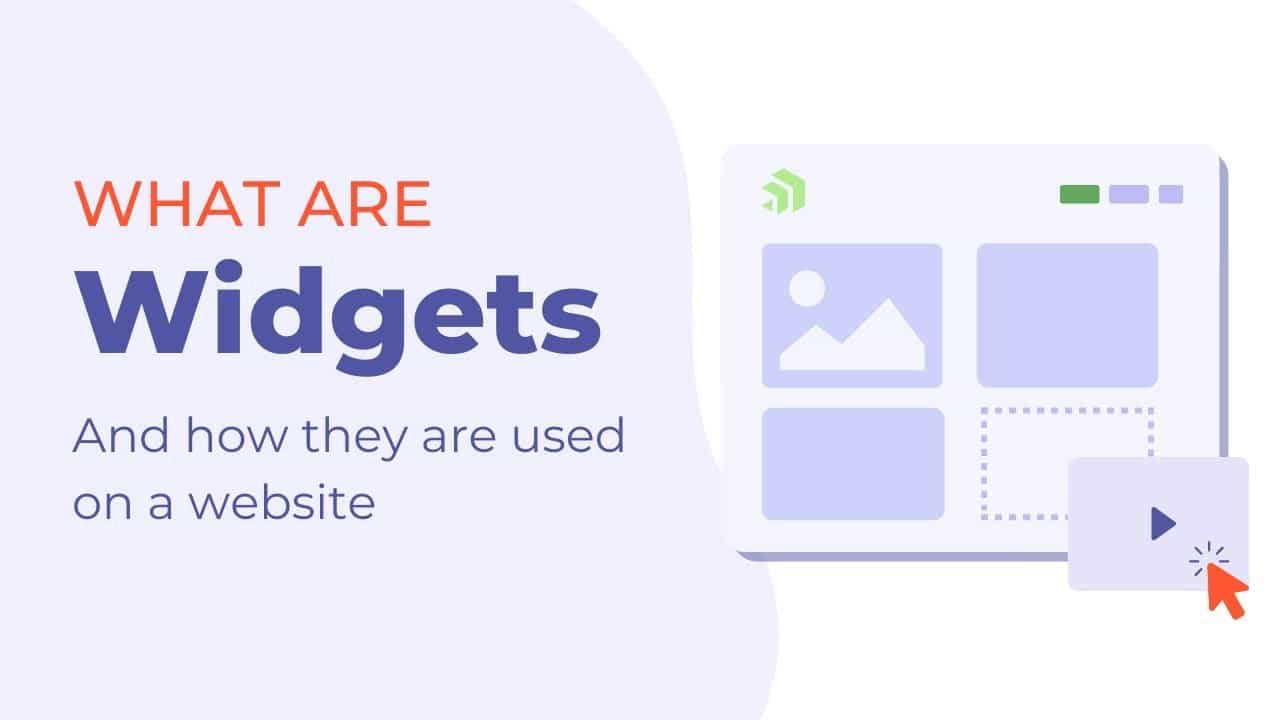Understanding Widgets in Web Design: Enhancing User Experience and Functionality
Widgets play a pivotal role in the realm of web design, contributing significantly to the overall user experience and functionality of a website. These versatile and dynamic elements can transform a static webpage into an interactive and engaging platform, catering to user needs and enhancing their interaction with the content. In this article, we delve deep into the world of widgets, exploring their purpose, types, and the impact they have on modern web design.
What Are Widgets?
Widgets are self-contained, reusable components that display specific information or provide interactive functionality on a website. They are essentially small applications or tools embedded within a web page to perform various tasks, such as displaying real-time weather updates, social media feeds, interactive calendars, search bars, and much more. Widgets can be thought of as digital building blocks that empower web designers to craft dynamic and user-friendly interfaces.

Types of Widgets
Widgets come in a wide variety, each serving a unique purpose and enhancing specific aspects of a website. Here are some common types of widgets:
Content Widgets: These widgets are used to display various forms of content, such as text, images, videos, and audio. They help present information in an organized and visually appealing manner. Popular examples include image galleries, video players, and audio playlists.
Social Media Widgets: Social media integration is crucial for modern websites. Social media widgets allow users to share, like, and follow content seamlessly. These widgets often display a website’s social media feed, enabling visitors to engage with the brand across multiple platforms.
Interactive Form Widgets: Forms are essential for user interaction and data collection. Interactive form widgets, such as contact forms, surveys, and polls, enable users to provide feedback, subscribe to newsletters, or submit inquiries.
Navigation Widgets: Navigation is a fundamental aspect of user experience. Navigation widgets include menus, dropdowns, and breadcrumb trails, making it easier for users to explore a website’s content and find what they’re looking for.
E-commerce Widgets: For online businesses, e-commerce widgets facilitate shopping experiences. These can include shopping carts, product catalogs, recommended products, and customer reviews.
Search Widgets: Search functionality enhances user convenience by allowing them to quickly locate specific content on a website. Search widgets often come with filters and auto-suggestions to streamline the search process.
Media Embed Widgets: These widgets enable the seamless embedding of external media content, such as maps, audio players, and social media posts, into a web page.
Subscription Widgets: Subscription widgets are designed to capture user emails for newsletters, updates, and promotions. They often offer incentives like discounts or exclusive content to encourage sign-ups.
Implementing Widgets
The process of implementing widgets in a website involves a combination of design, development, and integration. Here’s a general outline of the steps:
Selection: Choose the appropriate widgets that align with your website’s goals and target audience. Consider the types of content and functionality that will enhance user engagement.
Design: Design the widgets to match the overall aesthetics of your website. Ensure that the widgets are visually appealing, easy to understand, and seamlessly integrate with the existing design elements. https://citibuildconstruction.com.au/new-homes-vaucluse/
Development: Develop the widgets using web technologies such as HTML, CSS, and JavaScript. Many pre-built widget libraries and frameworks are available, making the development process more efficient.
Customization: Customize the widgets to suit your specific requirements. Adjust colors, fonts, sizes, and layouts to ensure consistency with your brand identity.
Integration: Integrate the widgets into your web pages by embedding the necessary code. Place the widgets strategically in areas where they provide the most value and enhance user interaction.
Testing: Thoroughly test the widgets across different devices and browsers to ensure they function correctly and maintain responsiveness.
The Impact of Widgets on User Experience
Widgets play a crucial role in shaping the user experience of a website. When utilized effectively, they offer several benefits:
Enhanced Engagement: Interactive widgets captivate users and encourage them to spend more time on the website. This increased engagement can lead to lower bounce rates and higher conversion rates.
Improved Navigation: Navigation widgets simplify the process of exploring a website, making it easier for users to find relevant content and navigate through different pages.
Personalization: Widgets can provide personalized experiences by displaying content based on user preferences, location, or browsing history.
Information Accessibility: Widgets like search bars and content sliders improve the accessibility of information, enabling users to quickly find what they’re looking for.
Real-time Updates: Widgets that display real-time information, such as news feeds or social media updates, keep users informed and engaged with current events.
Best Practices for Widget Implementation
To ensure effective utilization of widgets, consider the following best practices:
Relevance: Choose widgets that align with your website’s purpose and cater to your target audience’s needs.
Performance: Optimize widget performance to prevent slowing down your website’s loading times. Use efficient code and minimize the number of widgets on a single page.
Mobile-Friendly: Ensure that widgets are responsive and work seamlessly across different devices, including smartphones and tablets.
Usability: Design widgets with a user-centric approach. They should be intuitive, easy to interact with, and contribute positively to the overall user experience.
Regular Maintenance: Periodically review and update widgets to ensure they remain functional and relevant. Remove outdated or underperforming widgets to keep your website streamlined.
Conclusion
Widgets are indispensable tools in modern web design, elevating user experiences and adding valuable functionality to websites. Their versatility and ability to cater to various user needs make them an essential component of any well-designed website. By understanding the types of widgets available, implementing them effectively, and adhering to best practices, web designers can harness the power of widgets to create engaging, interactive, and user-friendly online platforms. https://diversewebsitedesign.com.au/website-design-bridgewater/






